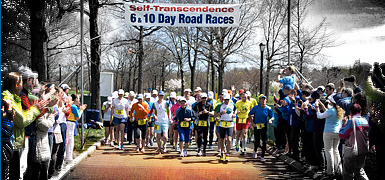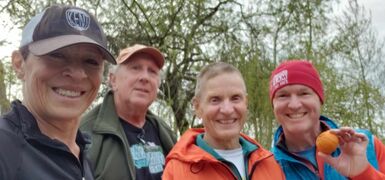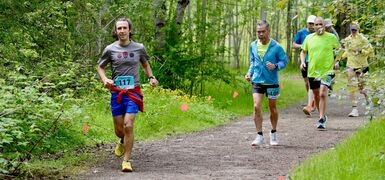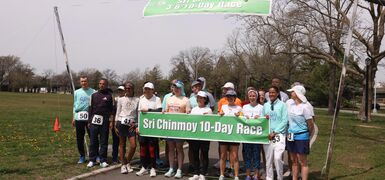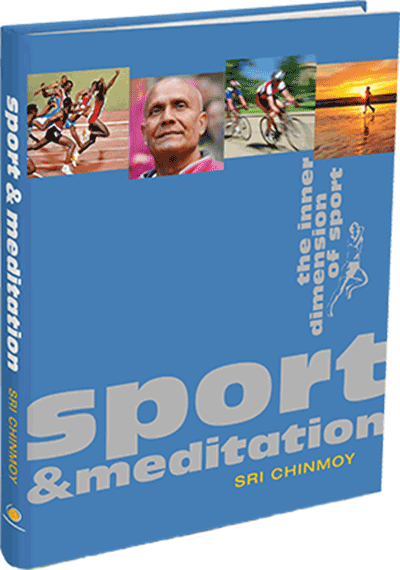6 and 10 Day-Tales From Medical and Other Comments
I usually arrive at the Six and Ten-Day races around 5:00 pm after the runners have spent a full morning and afternoon of running/walking/eating/resting since I last saw them. When I leave to go home around 1:00 a.m. after offering massages to the men who are about to go to bed for the night there are very few runners or helpers out on the race course. Most of those late-nighters are usually walking or running quite slowly. The contrast in the energy and excitement on the course between those two times is quite remarkable.
The runners have had mostly sunny days in this race. When there were clouds covering the sky most of the time it did not rain as in past years. So having a relatively dry race is one boon that the runners can really appreciate and feel grateful for. The nights do get very cold though, and sometimes it is very windy. This can make running and walking quite uncomfortable and difficult, especially near the lake, which offers no protection from the cold, harsh winds.
Coming into the medical tent after a full day and long evening on their feet as they struggle with the weather, tiredness and their own bodies’ limitations and aches and pains, some of the runners feel a great relief and joy. Besides the fact that the medical tent is usually the warmest place on the racecourse, they know they will be cared for as they lie down in a protected and comfortable environment.
I have been working off and on in medical tents at our multiday races since they began in 1985. When I say ‘off and on’ I mean that I have also run in these races so I have developed a good appreciation of the medical tent from the runner’s perspective.
Although I am not a certified masseur, doctor or chiropractor, I have been doing massages for over forty years and have also learned how to treat certain running ailments and health problems related to running.
One of the most important things to observe when a very tired and sore runner comes into the tent is how they are walking, breathing, talking and if they seem faint or disoriented. Most of the time they just come in to lie down, get a massage or take care of blisters.
Lately though I have also been treating some inflamed muscles and tendons such as shin splints and Achilles problems.
In normal day to day life if a runner would have some of these problems you would tell them to stop running for a few days or weeks until they healed. In most cases in this race if the injury is not too serious we will take care of the problem enough so they can at least keep walking. Some of them eventually do start running again after some time.
One night the medical tent was really busy with ‘patients’ and three and sometimes four of us were taking care of them as they came in and out in a steady stream for hours. Dr. Sakhshat Flowers, a good friend, member of the SCMT and an M.D. with his own practice and clinic in New Jersey, was in the tent diagnosing problems and helping to treat the more acute ones. He had a special laser device to facilitate tissue healing and circulation and whatever else it does. The rest of us who were ‘less technical’ did our usual massages, taping, blister treatments, etc.
One runner from Germany had a very inflamed shin splint. Dr. Sakshat worked on it with the laser and then I massaged it to drain out some of the fluid or lymph, which naturally rushes to an injury to help promote healing in that area. I also iced it and taped it to support it when he walks, but at this point it was very late and we just wanted him to elevate it and rest it.
He had been resting for a few hours lying down and finally needed to get up and go to sleep in his own tent. As he sat up he turned white and started to faint and we then took care of that somewhat scary condition by elevating his legs and lowering his head. We gave him some water to drink when we saw that he was not unconscious and after checking his temperature, pulse, etc. let him rest some more. By then it was 1:30 a.m. and I had to leave so we made sure he drank water regularly and had someone check up on him regularly. One has to be very careful of dehydration when involved in so much physical exercise even after stopping.
The next day when I came back in the late afternoon I knew that he was all right. I saw him walking quite briskly looking very energetic and strong. He had walked over a marathon that day already and was looking forward to running into the night. I did get to see him again in the medical tent later that evening and worked on his shin splint once more. After a short rest he was out on the course again moving quite well.
This kind of story is similar to many of the multiday runners who are strong enough to endure these kinds of physical and mental challenges. Of course those with more ultra marathon experiences as well as those who have trained properly will not experience problems that are debilitating and can rebound from their ailments quickly. Some runners’ problems may become too intense or severe so they are first recommended to take longer rests and then to drop out of the race if it is too serious and a risk to their health and well-being.
Surprisingly of the 82 or so runners who started both races only two that I know of had to leave the race due to health or injury problems. With less than two days to go until the end of the race most of the runners have adapted to the aches and pains of these challenge and are quite happy as they overcome each obstacle. Outwardly they make look tired and not be smiling all of the time, but there is a certain and real contentment inside the runners who are able to endure until the end. This becomes more obvious as the goal fast approaches.
Surprisingly some of the runners are now actually getting stronger. This amazing phenomenon occurs in races as long as these when the body seems to adapt quickly after the initial shock of the long days of movement on their feet. The runners who do not adapt and just have to struggle with their weaknesses are usually those with less experience, background and training. But their achievements, as well as those who have had to stop altogether before the end of the race, never goes unrewarded.
The heroic attempts of all of the runners who make it to the starting line are greatly appreciated by others. Their own efforts, whatever the result, will make them stronger not only as runners but also as individuals who wholeheartedly devote themselves to a worthy goal and strive with all of their effort to achieve those goals, whether they fall short sometimes or not.

